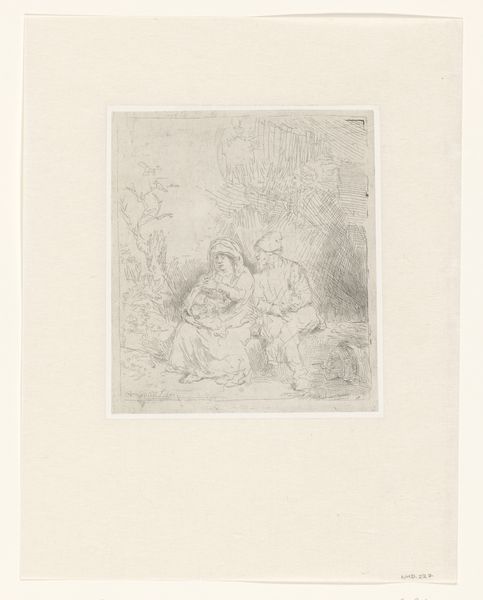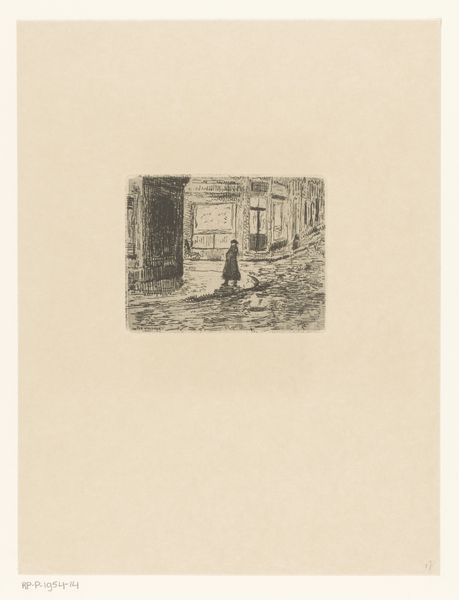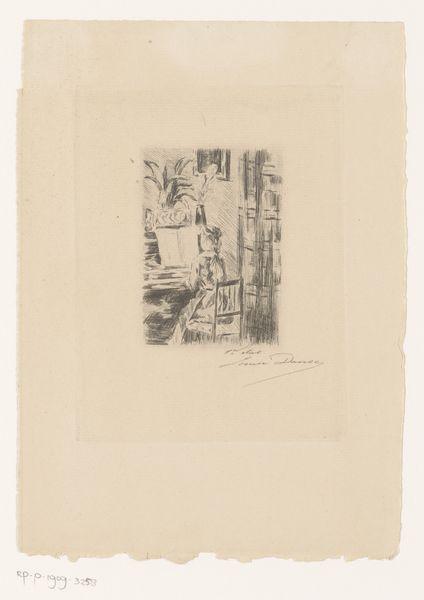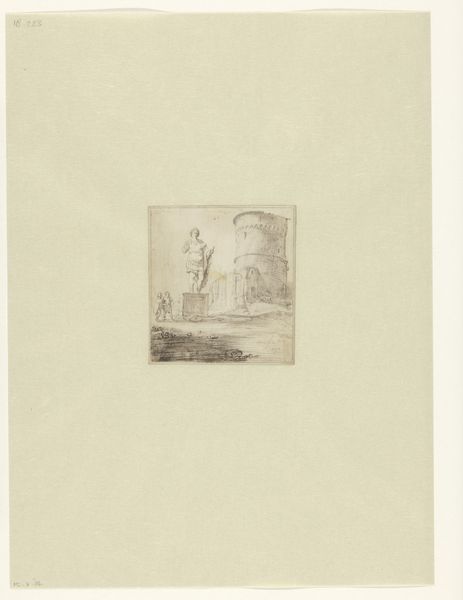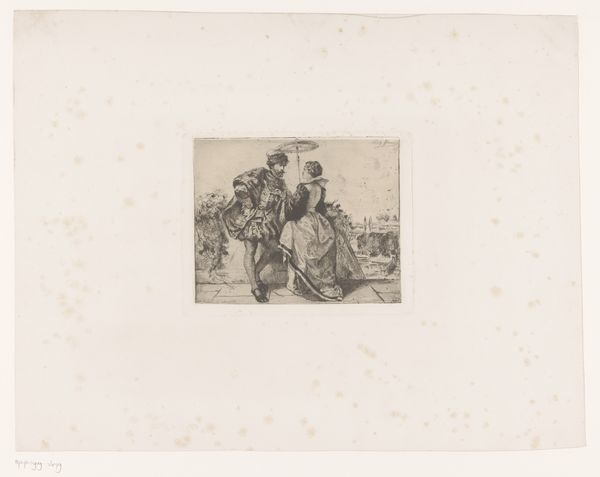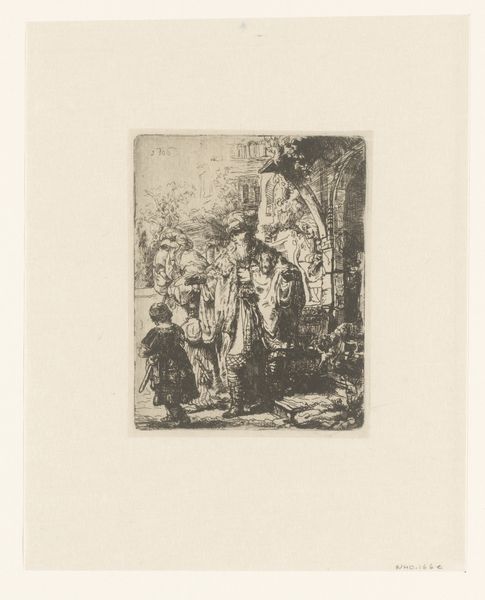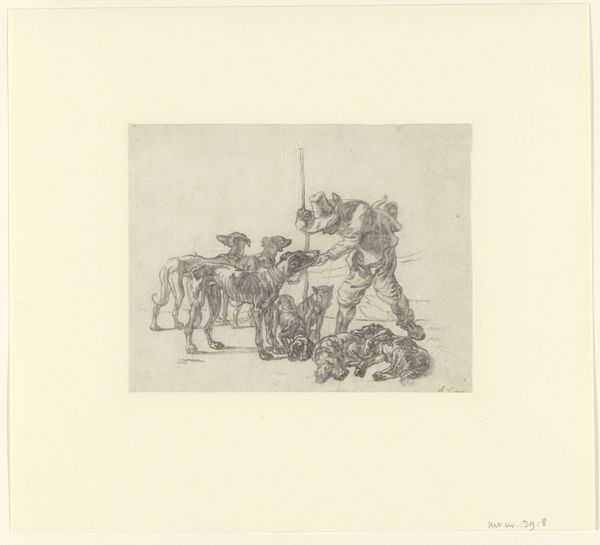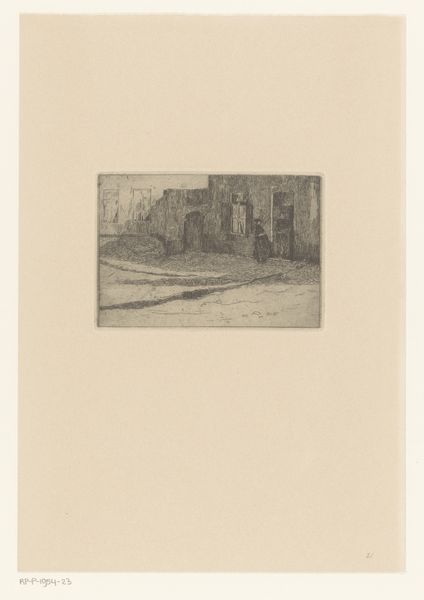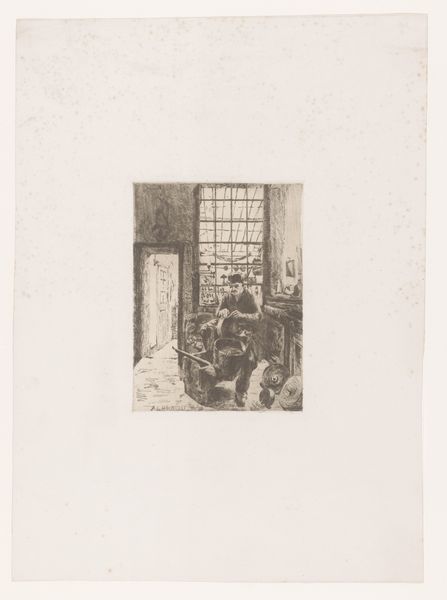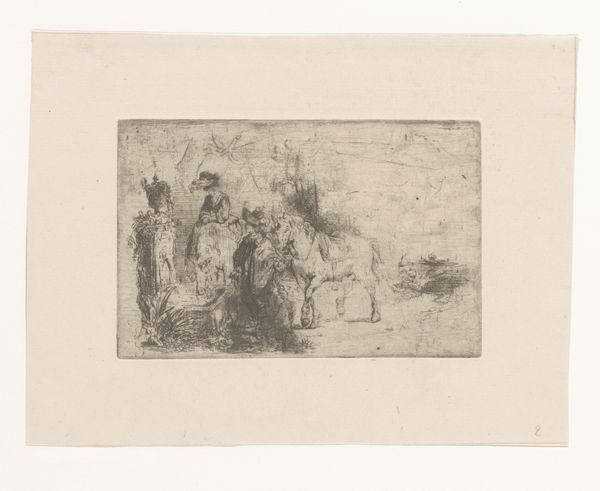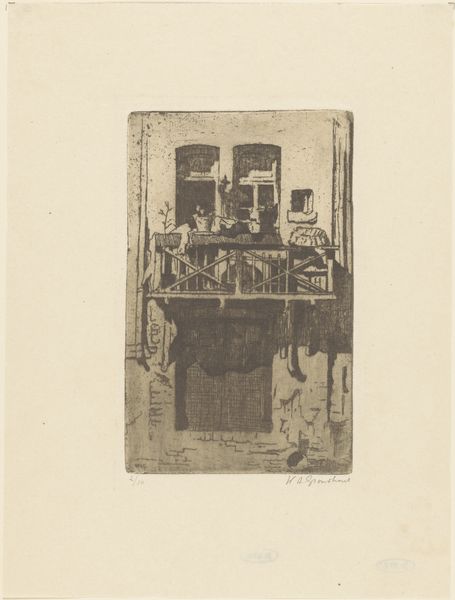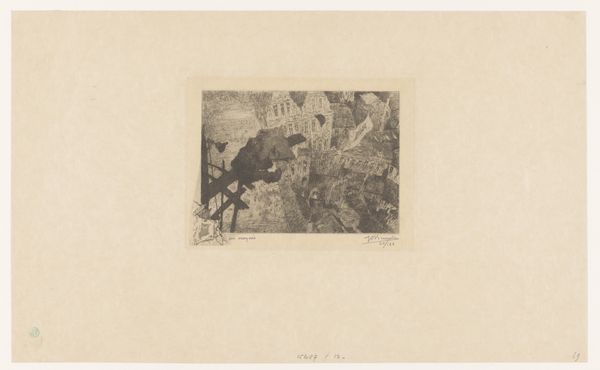
print, etching
#
art-nouveau
#
ink paper printed
# print
#
etching
#
old engraving style
#
figuration
#
genre-painting
Dimensions: height 131 mm, width 166 mm
Copyright: Rijks Museum: Open Domain
Curator: This is Rik Wouters’s etching “Figuren in feestkleding voor een winkel met maskers,” made sometime between 1892 and 1916. It translates to "Figures in festive clothes in front of a shop with masks.” Editor: Well, it certainly sets a mood! Even with the limited detail in the etching, I get a sense of playful unease, like a stage set for something ambiguous. Curator: Yes, the mask shop becomes quite symbolic. It raises questions about identity and performance, particularly around gender. The figures seem costumed, maybe enacting or resisting specific roles within the cultural theatre of the late 19th and early 20th centuries. The period was riddled with societal shifts and a negotiation of traditions that this festive crowd is confronting and participating within, all at once. Editor: The choice of figures is curious. I mean, one clearly recalls a pierrot with their familiar sad clown garb, while the other…that sweeping gown and perhaps exaggerated hair seem intentionally performative of a certain exaggerated femininity. Masks have long been a symbol for hidden identity. In the wake of a wave of rising modernity, what is being obfuscated, here? Curator: Absolutely. Considering Wouters's work as a whole, and the influence of Art Nouveau at the time, the exaggeration is key. The scene isn't simply decorative; it invites us to think about how we fashion and conceal ourselves, and who profits from these crafted presentations. Editor: And there's this element of the carnivalesque: The pierrot as a long-standing trope and image, coupled with the mask shop create this visual sense of history repeating through cultural symbol. Curator: Yes, I read that connection as part of its quiet commentary. The symbols and codes within the print offer an interesting perspective, even now. It lets us think about who gets to perform what role, and for whose benefit. Editor: In all its symbolic detail, I think that's why it resonates so much, and over so long! The past and present collapse into this playful-uneasy stage where, like actors, we continue our costumed performances, reflecting, perhaps, very little change at all.
Comments
No comments
Be the first to comment and join the conversation on the ultimate creative platform.
